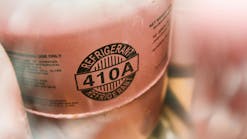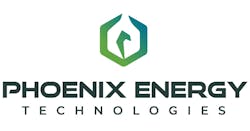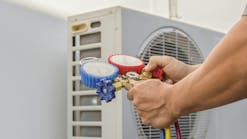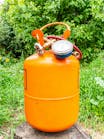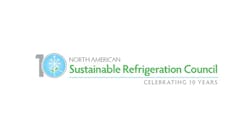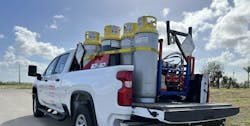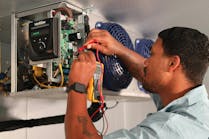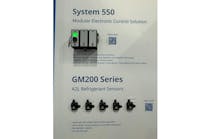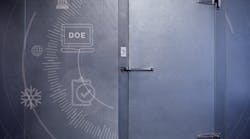It’s been more than two years since the commercial refrigeration industry has faced a major regulatory deadline from the Department of Energy (DOE). Since 2017, original equipment manufacturers (OEMs) of new stand-alone, reach-in equipment have been required to comply with the DOE’s latest energy-efficiency standards. But as 2020 quickly approaches, the DOE’s mandate will take aim at another ubiquitous class of refrigeration equipment: walk-in coolers and freezers (WICF).
The ruling requires 20–40 percent energy reductions in WICFs smaller than 3,000 square feet that are manufactured after the following enforcement dates:
• Jan. 1, 2020, for WICFs with medium-temperature dedicated condensing systems
• July 10, 2020, for WICFs with low-temperature dedicated condensing systems
These deadlines may come as no surprise for those keeping track of the dynamic regulatory climate; the medium-temperature WICF mandate has been in effect since June 5, 2017. But with final enforcement dates quickly approaching, many OEMs are now eying these deadlines with new urgency and making the necessary design changes needed to comply.
Refrigeration System and Component Impacts
The DOE’s WICF ruling directly applies to anyone manufacturing, producing, assembling or importing to certify WICF components. Impacted parties must meet the applicable standards based on the date of manufacture.
From a refrigeration system standpoint, "compliant components" refer to dedicated and packaged condensing units (indoor and outdoor) used in both new and retrofit applications, including:
• Condensing units that are assembled to construct a new WICF
• Condensing units used to replace an existing, previously installed WICF component (retrofit)
• Condensing units used within packaged systems
Other components — such as unit coolers (evaporators), doors, panels and lighting — are also within the jurisdiction of the DOE’s WICF ruling.
It’s important to note that contractors and wholesalers can still use and stock condensing units that were manufactured before the DOE enforcement dates for retrofit purposes. From the DOE’s perspective, only condensing units manufactured after the enforcement dates must be compliant.
Achieving WICF Compliance Via the AWEF Standard
To evaluate the energy efficiency of a complete WICF system, the DOE uses a metric created by the Air-Conditioning, Heating, and Refrigeration Institute (AHRI) called the Annual Walk-In Energy Factor (AWEF). As defined by AHRI, the AWEF calculation is based on “a ratio of the total heat, not including the heat generated by the operation of refrigeration systems, removed, in Btu, from a walk-in box during a one-year period of usage for refrigeration to the total energy input of refrigeration systems, in watt-hours, during the same period”.
Per the DOE, there are several WICF equipment classes below the 3,000 square foot limit that must meet or exceed the minimum AWEF ratings based on capacity and application (e.g., medium- or low-temperature, indoor or outdoor).
The PDF download found at the end of this article details the minimum AWEF rating per equipment class.
How Emerson is Helping OEMs
1. AWEF-compliant condensing units
There are a variety of ways in which Emerson is helping WICF OEMs achieve compliance. As a manufacturer of condensing units for a wide range of refrigeration applications, we are working to certify our WICF condensing units meet the DOE’s minimum AWEF requirements. And as the enforcement deadlines near, we will make this compliance data publicly available.
For WICF OEMs, using certified condensing units will help them meet the compliance requirements in one of their primary refrigeration system components. OEMs will simply need to combine an Emerson AWEF-compliant condensing unit with any AWEF-compliant unit cooler to achieve compliance in a dedicated system.
2. Product design, development and certification
Emerson also offers AWEF testing and certification services to OEMs through our Design Services Network (DSN). Not only are we helping OEMs to verify AWEF compliance, we’re also help- ing them to address refrigerant regulations — especially if their customers are impacted by regional and global environmental regulations, such as the California Air Resources Board (CARB), E.U. F-Gas and the Kigali Amendment to the Montreal Protocol.
By doing so, we’re helping OEMs combine their product development efforts into a single design cycle, addressing AWEF compliance and the transition to lower-GWP refrigerants at the same time. By enabling OEMs to go to market with WICF units that address both challenges, we’re furthering our commitment to helping OEMs and industry professionals navigate regulatory complexities and develop smart, sustainable strategies for the future.
DSN offers the following accreditations:
• Certified third-party test lab
• UL, NSF, ASHRAE
• ISO 17025 and approved by the California Energy Commission
OEMs must also register their compliant WICFs in the DOE’s Compliance Certification Management System (CCMS) database for commercial refrigeration equipment. The CCMS maintains a repository of equipment data demonstrating compliance with the new minimum AWEF requirements. As part of its certification services, the DSN can help OEMs complete and maintain the CCMS registration process.
How Will the Ruling Impact You?
The DOE’s WICF ruling will have broad impacts throughout the industry, from OEMs and wholesalers to contractors and end users. Because the DOE WICF ruling impacts both new and retrofit equipment, every segment of the commercial refrigeration supply chain will need to understand its implications. Here’s what you need to know:
• OEMs — need to complete the engineering design cycle, testing and certification in 2019 to sell new compliant equipment in 2020.
• Contractors — must understand that if they replace a condensing unit with one manufactured after the DOE enforcement dates, it must be an AWEF-compliant unit. However, older units and inventory may still be used.
• Wholesalers — must be prepared for changing inventories and begin to carry only AWEF-compliant condensing units if they’re manufactured after the 2020 enforcement dates for WICF applications.
• Design consultants — must be well-versed in the regulatory impacts to advise end users in the selection of energy-compliant, sustainable systems.
• End users — need to select future-proof equipment that aligns with their long-term refrigeration strategies.
Don't Wait; Consult an Expert
If you’re an OEM of walk-in coolers and freezers, you’re quickly running out of time to achieve compliance. As of Jan. 1, 2020, you will be expected to manufacture WICFs that meet the DOE’s minimum AWEF standards. But if you’re not sure how to proceed with this compliance process, Emerson can help guide you through this transition in multiple ways.
Choose from our AWEF-rated condensing units and energy- efficient compressors, or utilize our Design Services Network to expedite your product development, design and testing processes. With our breadth of products, expertise and resources, we can help you achieve compliance and develop sustainable refrigeration strategies for your customers — and your future.
Sources
https://www1.eere.energy.gov/buildings/appliance_standards/pdfs/manufacturer_faq_2012-01-30.pdf
https://www1.eere.energy.gov/buildings/appliance_standards/pdfs/wicf_faq_2012-01-20.pdf
https://www.regulations.doe.gov/certification-data/#q=Product_Group_s%3A*
https://www.energy.gov/sites/prod/files/2016/02/f29/Enforcement%20Policy%20Statement%20-%20WICF%2002-01-16.pdf
https://www1.eere.energy.gov/guidance/detail_search.aspx?IDQuestion=613&pid=2&spid=1
https://www.regulations.gov/document?D=EERE-2015-BT-STD-0016-0075
Information presented herein may not represent the latest regulatory standards and/or updates.

